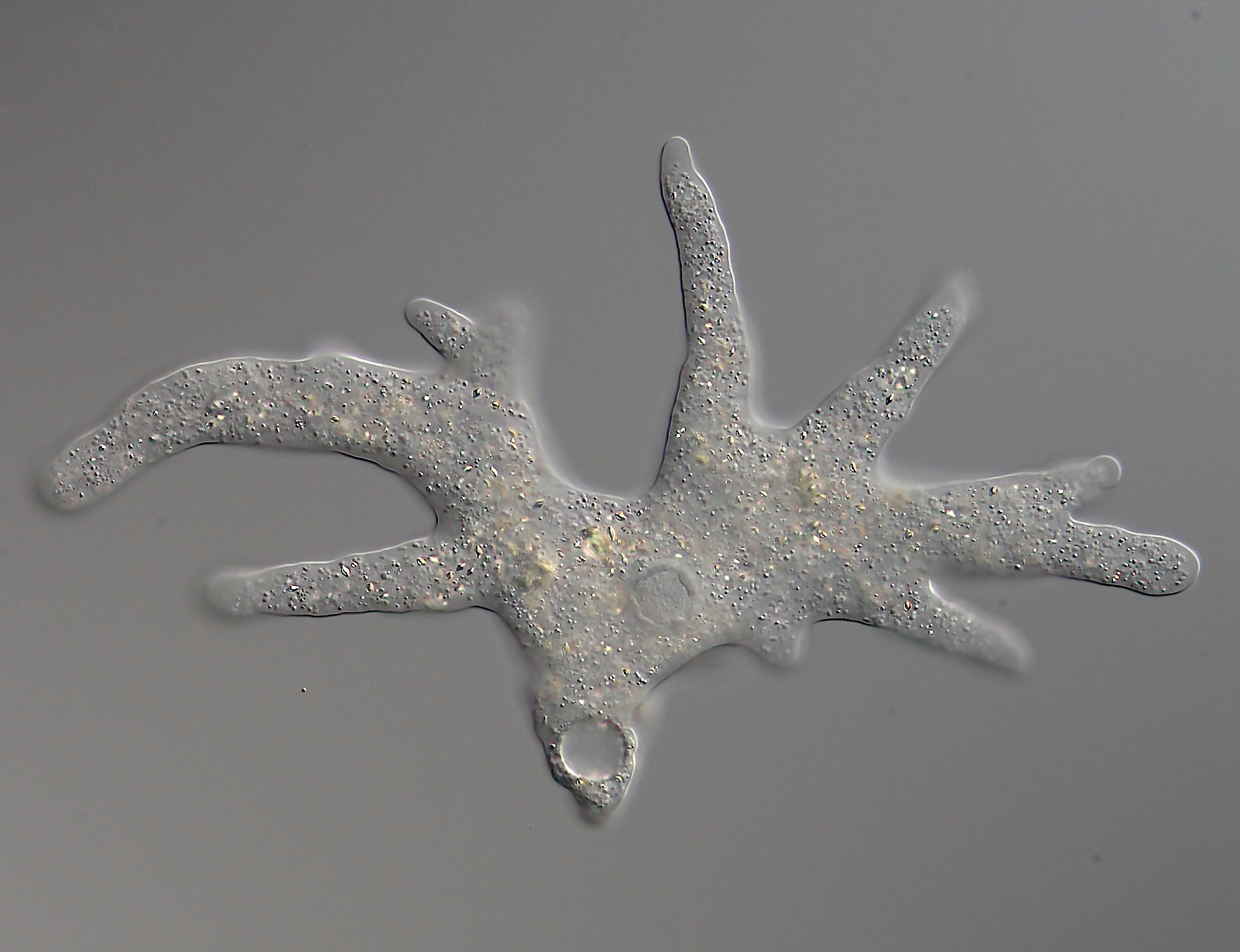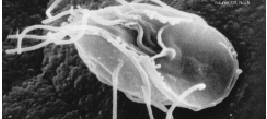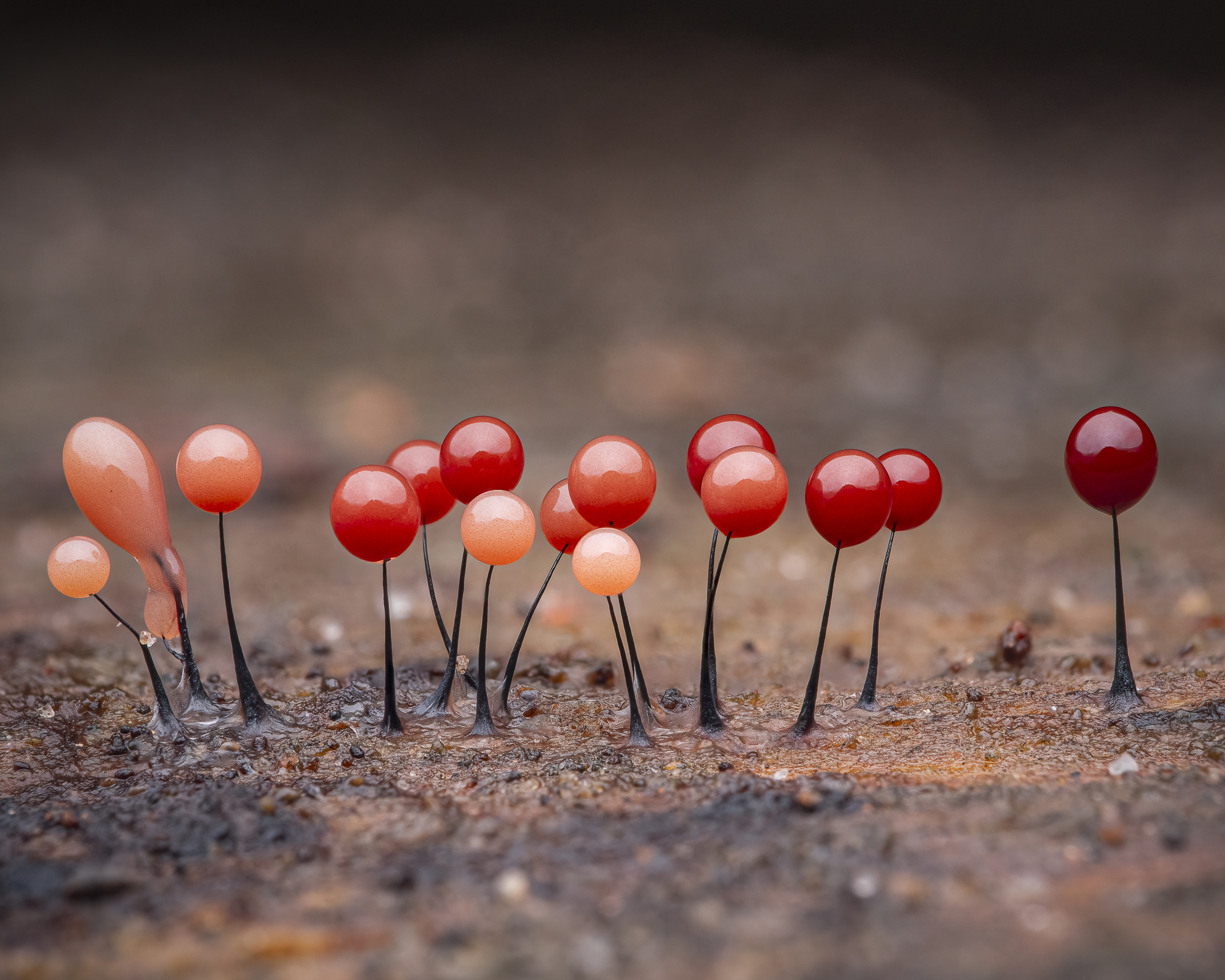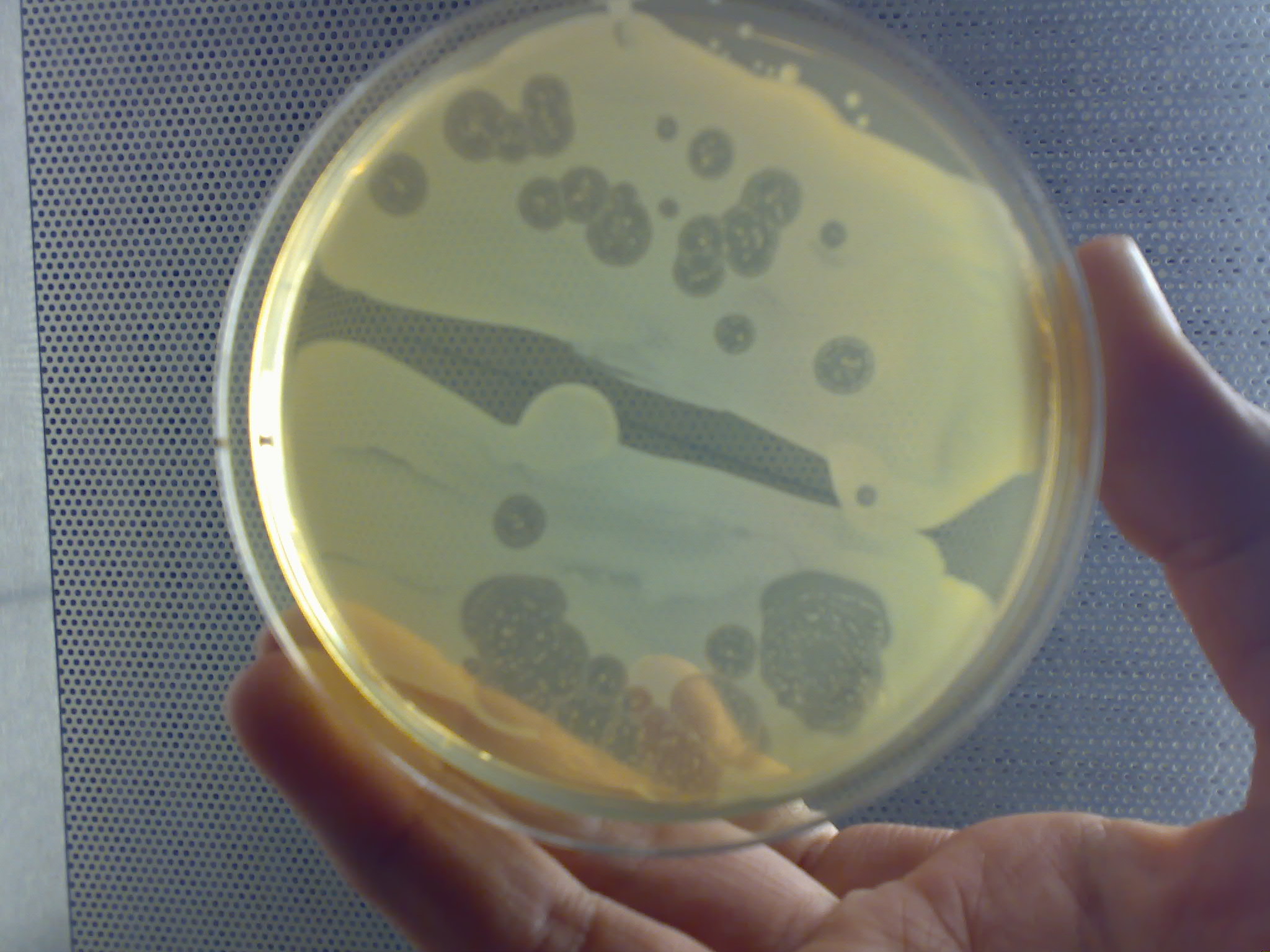|
Eumycetozoa
Eumycetozoa (), or true slime molds, is a diverse group of protists that behave as slime molds and develop fruiting bodies, either as sorocarps or as sporocarp (fungi), sporocarps. It is a monophyletic group or clade within the phylum Amoebozoa that contains the Myxogastria, myxogastrids, dictyostelids and Protosporangiida, protosporangiids. Characteristics Eumycetozoa is a clade that includes three groups of amoebozoan protists: Myxogastria, Dictyostelia and Protosporangiida—also known as Myxomycetes, Dictyosteliomycetes and Ceratiomyxomycetes, respectively. It is defined on a Phylogenetic nomenclature#Phylogenetic definitions of clade names, node-based approach as the least inclusive clade containing the species ''Dictyostelium discoideum'' (a dictyostelid), ''Physarum polycephalum'' (a myxogastrid) and ''Ceratiomyxa fruticulosa'' (a protosporangiid). All known members of Eumycetozoa generate fruiting bodies, either as sorocarps (in dictyostelids) or as sporocarp (fungi), s ... [...More Info...] [...Related Items...] OR: [Wikipedia] [Google] [Baidu] |
Protosporangiida
Eumycetozoa (), or true slime molds, is a diverse group of protists that behave as slime molds and develop fruiting bodies, either as sorocarps or as sporocarps. It is a monophyletic group or clade within the phylum Amoebozoa that contains the myxogastrids, dictyostelids and protosporangiids. Characteristics Eumycetozoa is a clade that includes three groups of amoebozoan protists: Myxogastria, Dictyostelia and Protosporangiida—also known as Myxomycetes, Dictyosteliomycetes and Ceratiomyxomycetes, respectively. It is defined on a node-based approach as the least inclusive clade containing the species ''Dictyostelium discoideum'' (a dictyostelid), ''Physarum polycephalum'' (a myxogastrid) and '' Ceratiomyxa fruticulosa'' (a protosporangiid). All known members of Eumycetozoa generate fruiting bodies, either as sorocarps (in dictyostelids) or as sporocarps (in myxogastrids and protosporangiids). Within their life cycle, they may appear as a single haploid amoeboid ce ... [...More Info...] [...Related Items...] OR: [Wikipedia] [Google] [Baidu] |
Amoebozoa
Amoebozoa is a major Taxonomy (biology), taxonomic group containing about 2,400 described species of Amoeba, amoeboid protists, often possessing blunt, fingerlike, Pseudopod#Morphology, lobose pseudopods and tubular mitochondrial cristae. In traditional classification schemes, Amoebozoa is usually ranked as a phylum within either the kingdom (biology), kingdom Protista or the kingdom Protozoa. In the classification favored by the International Society of Protistologists, it is retained as an unranked "supergroup (biology), supergroup" within Eukaryota. Molecular genetics, Molecular genetic analysis supports Amoebozoa as a monophyletic clade. Modern studies of eukaryotic phylogenetic trees identify it as the sister group to Opisthokonta, another major clade which contains both fungi and animals as well as several other clades comprising some 300 species of unicellular eukaryotes. Amoebozoa and Opisthokonta are sometimes grouped together in a high-level taxon, named Amorphea. Amoeboz ... [...More Info...] [...Related Items...] OR: [Wikipedia] [Google] [Baidu] |
Ceratiomyxa Fruticulosa
''Ceratiomyxa'' is a genus of plasmodial slime mould within the Eumycetozoa, first described by Pier Antonio Micheli. They are widely distributed and commonly found on decaying wood. The plasmodium often appears as white frost-like growth or thin watery layers on wood. Pillar or wall-like sporangia bud from the plasmodium and develop spores that undergo multiple divisions before they release flagellated zoospores. The zoospores will then pair off, undergo plasmogamy, and form zygotes that will later form new plasmodia. The genus currently contains 4 species. The most notable member is ''Ceratiomyxa fruticulosa,'' a slime mould found in most parts of the world. Other known species of ''Ceratiomyxa'' are mostly found in the tropics. Etymology ''Ceratiomyxa'' comes from the Latin word ''ceratus'' meaning "waxed" and the ancient Greek word ''myxa'' meaning "mucus". History of knowledge ''Ceratiomyxa'' was first described under the name ''Puccinia ramose'' (later revised to '' ... [...More Info...] [...Related Items...] OR: [Wikipedia] [Google] [Baidu] |
Myxogastria
Myxogastria/Myxogastrea (myxogastrids, ICZN) or Myxomycetes ( ICN) is a class of slime molds that contains 5 orders, 14 families, 62 genera, and 888 species. They are colloquially known as the ''plasmodial'' or ''acellular'' slime moulds. All species pass through several very different morphologic phases, such as microscopic individual cells, slimy amorphous organisms visible with the naked eye, and conspicuously shaped fruit bodies. Although they are monocellular, they can reach immense widths and weights: in extreme cases they can be up to across and weigh up to . The class Myxogastria is distributed worldwide, but it is more common in temperate regions where it has a higher biodiversity than in polar regions, the subtropics, or the tropics. They are mainly found in open forests, but also in extreme regions such as deserts, under snow blankets, or underwater. They also occur on the bark of trees, sometimes high in the canopy. These are known as cort ... [...More Info...] [...Related Items...] OR: [Wikipedia] [Google] [Baidu] |
Slime Mold
Slime mold or slime mould is an informal name given to a polyphyletic assemblage of unrelated eukaryotic organisms in the Stramenopiles, Rhizaria, Discoba, Amoebozoa and Holomycota clades. Most are near-microscopic; those in the Myxogastria form larger plasmodial slime molds visible to the naked eye. The slime mold life cycle includes a free-living single-celled stage and the formation of spores. Spores are often produced in macroscopic multicellular or multinucleate fruiting bodies that may be formed through aggregation or fusion; aggregation is driven by chemical signals called acrasins. Slime molds contribute to the decomposition of dead vegetation; some are parasitic. Most slime molds are terrestrial and free-living, typically in damp shady habitats such as in or on the surface of rotting wood. Some myxogastrians and protostelians are aquatic or semi-aquatic. The phytomyxea are parasitic, living inside their plant hosts. Geographically, slime molds are cosmopo ... [...More Info...] [...Related Items...] OR: [Wikipedia] [Google] [Baidu] |
Dictyostelium Discoideum
''Dictyostelium discoideum'' is a species of soil-dwelling Amoeboid, amoeba belonging to the phylum Amoebozoa, infraphylum Mycetozoa. Commonly referred to as slime mold, ''D. discoideum'' is a eukaryote that transitions from a collection of unicellular amoebae into a multicellular slug and then into a fruiting body within its lifetime. Its unique asexual Biological life cycle, life cycle consists of four stages: vegetative, aggregation, migration, and culmination. The life cycle of ''D. discoideum'' is relatively short, which allows for timely viewing of all stages. The cells involved in the life cycle undergo movement, chemical signaling, and development, which are applicable to human cancer research. The simplicity of its life cycle makes ''D. discoideum'' a valuable model organism to study genetic, cellular, and biochemical processes in other organisms. Natural habitat and diet In the wild, ''D. discoideum'' can be found in soil and moist leaf litter. Its primary diet consists ... [...More Info...] [...Related Items...] OR: [Wikipedia] [Google] [Baidu] |
Protist
A protist ( ) or protoctist is any eukaryotic organism that is not an animal, land plant, or fungus. Protists do not form a natural group, or clade, but are a paraphyletic grouping of all descendants of the last eukaryotic common ancestor excluding land plants, animals, and fungi. Protists were historically regarded as a separate taxonomic kingdom known as Protista or Protoctista. With the advent of phylogenetic analysis and electron microscopy studies, the use of Protista as a formal taxon was gradually abandoned. In modern classifications, protists are spread across several eukaryotic clades called supergroups, such as Archaeplastida ( photoautotrophs that includes land plants), SAR, Obazoa (which includes fungi and animals), Amoebozoa and " Excavata". Protists represent an extremely large genetic and ecological diversity in all environments, including extreme habitats. Their diversity, larger than for all other eukaryotes, has only been discovered in rece ... [...More Info...] [...Related Items...] OR: [Wikipedia] [Google] [Baidu] |
Amoeboid
An amoeba (; less commonly spelled ameba or amœba; : amoebas (less commonly, amebas) or amoebae (amebae) ), often called an amoeboid, is a type of cell or unicellular organism with the ability to alter its shape, primarily by extending and retracting pseudopods. Amoebae do not form a single taxonomic group; instead, they are found in every major lineage of eukaryotic organisms. Amoeboid cells occur not only among the protozoa, but also in fungi, algae, and animals. Microbiologists often use the terms "amoeboid" and "amoeba" interchangeably for any organism that exhibits amoeboid movement. In older classification systems, most amoebae were placed in the class or subphylum Sarcodina, a grouping of single-celled organisms that possess pseudopods or move by protoplasmic flow. However, molecular phylogenetic studies have shown that Sarcodina is not a monophyletic group whose members share common descent. Consequently, amoeboid organisms are no longer classified together in ... [...More Info...] [...Related Items...] OR: [Wikipedia] [Google] [Baidu] |
Dictyostelid
The dictyostelids (Dictyostelia/Dictyostelea, ICZN, Dictyosteliomycetes, ICBN) or cellular slime molds are a group of slime molds or social amoebae. Multicellular behavior When food (normally bacteria) is readily available dictyostelids behave as individual amoebae, which feed and divide normally. However, when the food supply is exhausted, they aggregate to form a multicellular assembly, called a pseudoplasmodium, grex, or slug (not to be confused with the gastropod mollusc called a slug). The grex has a definite anterior and posterior, responds to light and temperature gradients, and has the ability to migrate. Under the correct circumstances the grex matures forming a sorocarp (fruiting body) with a stalk supporting one or more sori (balls of spores). These spores are inactive cells protected by resistant cell walls, and become new amoebae once food is available. In ''Acytostelium'', the sorocarp is supported by a stalk composed of cellulose, but in other dictyostelids ... [...More Info...] [...Related Items...] OR: [Wikipedia] [Google] [Baidu] |
Pseudopodia
A pseudopod or pseudopodium (: pseudopods or pseudopodia) is a temporary arm-like projection of a eukaryotic cell membrane that is emerged in the direction of movement. Filled with cytoplasm, pseudopodia primarily consist of actin filaments and may also contain microtubules and intermediate filaments. Pseudopods are used for motility and ingestion. They are often found in amoebas. Different types of pseudopodia can be classified by their distinct appearances. Lamellipodia are broad and thin. Filopodia are slender, thread-like, and are supported largely by microfilaments. Lobopodia are bulbous and amoebic. Reticulopodia are complex structures bearing individual pseudopodia which form irregular nets. Axopodia are the phagocytosis type with long, thin pseudopods supported by complex microtubule arrays enveloped with cytoplasm; they respond rapidly to physical contact. Generally, several pseudopodia arise from the surface of the body, (''polypodial'', for example, '' Amoeba ... [...More Info...] [...Related Items...] OR: [Wikipedia] [Google] [Baidu] |
Cytoplasm
The cytoplasm describes all the material within a eukaryotic or prokaryotic cell, enclosed by the cell membrane, including the organelles and excluding the nucleus in eukaryotic cells. The material inside the nucleus of a eukaryotic cell and contained within the nuclear membrane is termed the nucleoplasm. The main components of the cytoplasm are the cytosol (a gel-like substance), the cell's internal sub-structures, and various cytoplasmic inclusions. In eukaryotes the cytoplasm also includes the nucleus, and other membrane-bound organelles.The cytoplasm is about 80% water and is usually colorless. The submicroscopic ground cell substance, or cytoplasmic matrix, that remains after the exclusion of the cell organelles and particles is groundplasm. It is the hyaloplasm of light microscopy, a highly complex, polyphasic system in which all resolvable cytoplasmic elements are suspended, including the larger organelles such as the ribosomes, mitochondria, plant plasti ... [...More Info...] [...Related Items...] OR: [Wikipedia] [Google] [Baidu] |









